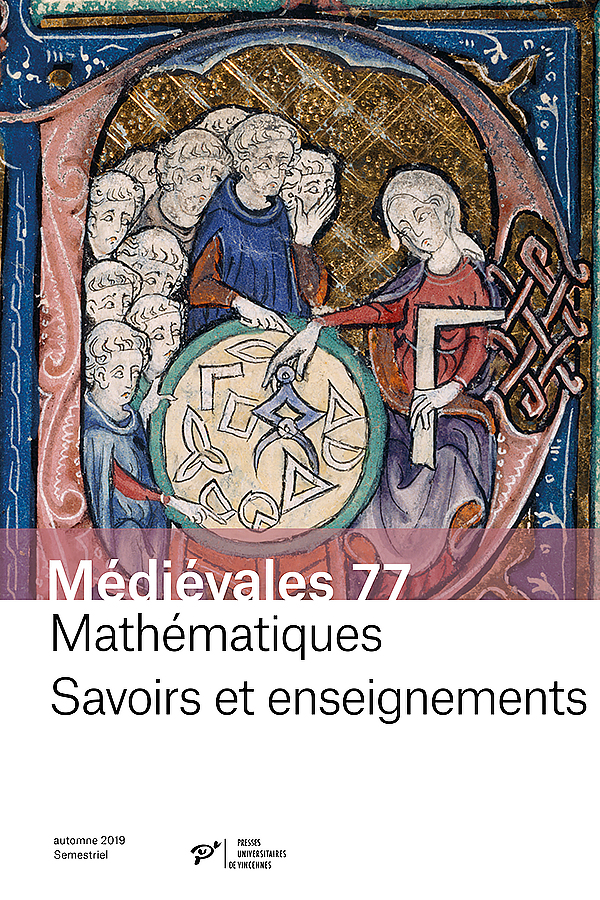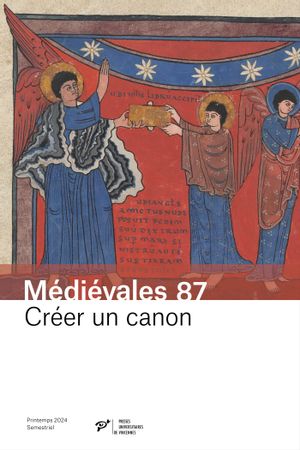Sonja Brentjes – Institut Max Planck d’histoire des sciences (Berlin)
Why and How to Study the History of Mathematical Education in Islamicate Societies between 750 and 1500
In this paper, I aim to raise questions about how to address the enormous amount of elementary mathematical texts in Arabic, Persian and Ottoman Turkish that has been preserved in different kinds of libraries over many centuries and countries. I propose to deal with them primarily as witnesses of a widespread educational system that began to include the mathematical sciences from the twelfth century onward and spread into many different regions even outside the classical Islamicate world and beyond the major urban centers. I offer reflections on why those texts have been ignored by historians of science in Islamicate societies for about half a century and how the research goals and methods applied by leading historians have prevented us from studying such a major corpus of texts and their institutional settings. I follow those historiographical issues with proposals for how to complement the study of mathematical texts in order to find answers an how teaching of the mathematical sciences was organized in a prevalently informal context, how teaching canons emerged and which teaching practices developed in the neighbourhood of the religious disciplines that dominated the educational landscapes.
Keywords : Biographies, education, islamicate societies, madrasa, paratext
Eleonora Sammarchi – Université Paris Diderot – CNRS, SPHERE, UMR 7219
The Collections of Algebraic Problems in the Qisṭās al-mu‘ādala fi ilm al-jabr wa’l-muqābala by al-Zanjānī
By the end of the 10th century, the mathematician al-Karajī founded a new school of algebraists. The aim of this school was to investigate the interaction between arithmetic and algebra. The book Qisṭās al-mu‘ādala fi ilm al-jabr wa’l-muqābala (Balance of the equation of algebra and al-muqābala) of the mathematician al-Zanjānī (first half of 13th century) is a treatise on algebraic computations which clearly belongs to this arithmetical-algebraic tradition. It is composed of a theoretical part and two long collections of problems. In order to study these collections, we need to consider first the history of the transmission of these problems, and to analyze the continuities and discontinuities between al-Zanjānī’s collections and those of the algebraists that are for him a direct or indirect reference. In addition to this heritage, the examination also reveals that it is in the problems themselves that the theory of algebraic computations is fully expressed and put into practice. Therefore, problems show al-Zanjānī’s algebra in action. They also give to the algebraist the opportunity to find new branches of his discipline, as the case of indeterminate analysis testifies. In this article, we focus on the structure of Qisṭās al-muādala and we examine the resolution of some examples of determinate and indeterminate problems included in the book.
Keywords : Algebra, al-Zanjānī, Indeterminate Analysis, Problems, 13th century.
Marc Moyon – Université de Limoges – CNRS, XLIM, UMR 7252
About Elementary Mathematical Algorithms in a Corpus of Arabic-Latin Texts from the Middle Ages
Arabic-Latin translations, particularly those made in Andalus in the twelfth century, provide Latin Europe with new knowledge and methods. In this contribution, we focus on the mathematical art of problem solving, either in geometric or arithmetic fields. We have isolated, in several codices dated from the thirteenth to the fifteenth century, a corpus of technical and didactic texts which stability in the history of copies, questions the historian of mathematics. Studying it allows us not only to reveal the form and content of such a corpus but also to show the coherence between the probable enterprise of the Toledan translator Gerard of Cremona and the future of this corpus in terms of circulation and appropriation.
Keywords : algebra, circulation, geometry, Gerard of Cremona, translation.
Stéphane Lamassé – Université Paris Sorbonne – LAMOP, UMR 8589
Cautelae : a Corpus of Mathematical Problems, between Collection, Series and Mathematical Culture
This article offers a new analysis of a set class of texts grouping mathematical problems, riddles, produced between the thirteenth and the end of the fifteenth century, one of whose origins is the propositions ad acuendos juvenes. Adopting a critical point of view at the historiographical production of which they have been the subject, it’s possible to distinguish a set of several collections of problems by highlighting their elements of coherence. From this set can be made a corpus which, placed in a diachronic perspective, can allows us to make assumptions on the uses of which these collections could be the object.
Keywords : Alcuin, Algorism, Mathematical games, Mathematics, Medieval teaching
Nicoletta Rozza – Université Frédéric II de Naples
A Few comments on the technical lexicon of the Practica Geometrie of Leonardo Pisano, alias Fibonacci
Leonardo Fibonacci represents, without any doubts, one of the most appreciated and well-known personalities in the Western world. His reputation is primarily related to the famous series of numbers named after him, even though he was above all a great science writer, who played a founding role in the History of Mathematics, as well as in the History of Culture. His books have been investigated over the years by prominent scholars, who gave birth to large and fruitful debates and translations, which let his works be known beyond the academic circles too. However, there is still a lack of philological and linguistic studies that could enlighten the most difficult aspects of his mathematical language. This topic aims to examine some recurring technical nouns of the Practica Geometrie. The most simple and apparently elementary words can be, in fact, very elusive and ambiguous; moreover, they can cause problems even to the most experienced and cautious interpreter.
Keywords : Geometry, Fibonacci, History of Medieval Mathematics, Medieval Latin.
Sabine Rommevaux – CNRS – Université Paris Diderot, SPHERE, UMR 7219
Unity and Number in the Questiones mathematice of Radulphus Brito
Raoul le Breton or Radulphus Brito, Master of Arts at the University of Paris, produced in the last years of the thirteenth century, a treatise on the philosophy of mathematics, which he organized in the form of Questions, typical of the university texts produced at that time. After a general presentation of these Questiones mathematice, I will give an overview of Raoul’s reflections on unity and number.
Keywords : Arithmetic, Philosophy of mathematics, Radulphus Brito, Teaching, University of Paris
Sebastián Provvidente – UBA-CONICET
Stylus theologicus et iuridicus : the causa Jean Petit at Constance (1414-1418) and the debates on tyrannicide
In this text we analyze the debates between theologians and jurists on Jean Petit’s Justification of tyrannicide within the frame of the Council of Constance (1414-1418). Beyond the political and circumstantial positions of the participants in the debates on tyrannicide, it is clear that there was a very important tension between theological and juridical discourse on this matter. The exclusion of juridical arguments made by the Gersonists was related to the dangers of individual decision in the exceptional case. Through their rejection to argue on these terms, the Gersonists lost the possibility to use an argument that might have seriously questioned John the Fearless juridical construction after the assassination of Louis of Orléans.
Keywords : Council of Constance, Procedure, Stylus theologicus, Stylus iuridicus, Tyrannicid
Jacques Hanoune – Directeur de recherche émérite à l’Institut National de la Santé et de la Recherche Médicale
N’espoir ne peur. Origin and circulation of the motto of Duke Charles II of Bourbon
Cardinal Charles II de Bourbon (1436-1488) left the cathedral of Sens a tapestry The Adoration of the Magi which includes the repeated motto N’espoir ne peur (“No hope no fear”) in its border. This motto is original and could seem unusual coming from a prelate. Mention of the negative role of fear and hope can be found in the classical literature, mainly in Lucian. It was Cardinal Charles ii de Bourbon, a wealthy patron and an erudite scholar, who reactivated this motto, probably as a simple rule of personal behaviour. It was widely circulated, particularly in its Latin form (nec spe nec metu), in the centuries that followed and continues to be so in our era, as a sign of either atheism or of personal independence.
Keywords : Charles II of Bourbon, motto, Museum of Sens, No hope no fear




